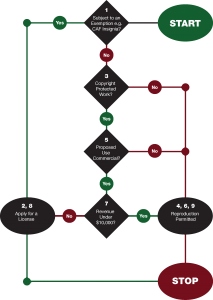Which type of business culture will you emphasize in your company?
When the rules of business are always changing, companies must keep up to stay competitive. One of the best bets for success is focusing on organizational culture. Business leaders should regularly assess culture to make sure it stays aligned with company strategy and market demands for both the client and employee market.
A strategically aligned culture breeds multiple benefits, with leadership that’s consistently more accessible and workers who are cross-trained and can comfortably discuss problems and propose solutions. According to the “Global Innovation 1000” study, companies with aligned cultures and innovation strategies demonstrate 30% higher enterprise growth and 17% higher profit growth than those with misaligned cultures and innovation strategies.
Problems With Misaligned Culture
A misaligned culture can show up in several ways. For instance, if your company is suffering from bad financial performance and you can’t point to an obvious reason (such as major economic shifts), it may be time to examine your company culture. A Great Place to Work study found that the 13 companies that consistently appear on Fortune’s 100 Best Companies to Work For list see higher average returns than comparable companies.
Culture also plays an increasingly powerful role in retaining talent. If you hire great people with the skills your company needs but they leave just a few months later, then consider looking closely at the company culture. Highly skilled people can choose where they work, and culture works like a magnet to attract and keep them.
If you’re losing good people or your bottom line is slipping, it’s time to take action.
How Leaders Can Effect Change in Every Culture
The role of leadership in culture change is key. Leaders must decide what works best within their market, industry, and specific workforce. The Competing Values Framework defines four different types of business cultures. Leaders can often emphasize one type as the main driver for the company’s culture; however, all four exist in each company to some degree.
1. Market Culture
This culture type centers on results. It fosters an environment in which people are laser-focused on hitting goals, and competition is king. Leaders in a market culture have high expectations and drive their workers to win and maintain a successful reputation, concentrating on market share and profitability.
In this type, leaders should work to influence the organizational culture by increasing visibility with clients through visits, regular service reviews, tours, and more. An excellent tactic is to create an advisory board of customers to gather feedback. Also, include internal staff on the board who can help implement changes. This allows the company to adjust the workforce makeup to best meet customers’ needs.
2. Clan Culture
Clan culture promotes unity and a sense of ownership among employees of all levels. It’s the sentiment that everyone is in it together. Team-building is critical and should happen frequently. Clan culture encourages communication and empowers team members to speak up and get involved, even outside of their designated department or role. Leaders are considered equal to employees.
The environment in this culture can be elevated by increasing communication across the board. Leaders can involve employees in decision-making, then put employee ideas into action. A great area where leaders can practice this is the company finances. Give all employees the ability to offer input on budgeting and planning.
3. Adhocracy Culture
In an adhocracy culture, leaders aim to surprise and delight both customers and employees. They set new standards, work toward continuous improvement, and seek to anticipate needs. Leaders desire and celebrate creative solutions, so taking risks is encouraged.
Leaders in an adhocracy should create ways to gather client input and store it in a database to detect trends and fix problems before they permeate the company. One example is to start a cross-departmental team to review issues and recommend plans to address them. When approved, these plans should be supported with a budget and resources to show that leaders are behind them.
4. Hierarchy Culture
Formal and structured, a hierarchy culture is driven by rules. Leaders take pride in maintaining smooth, efficient processes — and the reliable delivery of results that follow. The best way to improve quality in a hierarchy culture is to implement and monitor tools that clearly identify errors and communicate where the company stands compared to expectations and previous performance.
Leaders in this culture type should have written processes and procedures for everyone to see and follow; then, they should coach any team members who struggle to meet expectations. A performance management system that measures everyone by the same standards is a great way to increase accountability. Such a system should include strategy maps. Assign specific projects to each team member and measure performance.
Modern business models have only fed the importance of culture in a company’s success. By understanding the type of culture you’ve established and the best ways to lead in each one, you can make intentional changes that are needed to stand out in your industry.
Looking to enhance your company culture with a contingent workforce? Download the IES “Contingent Workforce Road Map” to guide you.
Business & Finance Articles on Business 2 Community
(28)
Report Post






